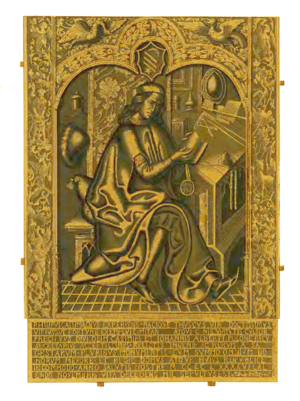Filippo Buonaccorsi facts for kids
Filippo Buonaccorsi, often called Callimachus, was an Italian writer and diplomat. He lived during the exciting time of the Renaissance, a period when people rediscovered old ideas and art. Born in Italy, he later became very important in Poland. He was known for his smart ideas and his skill in dealing with kings and popes.
Filippo's Life and Work
Filippo Buonaccorsi was born in 1437 in a town called San Gimignano in Tuscany, Italy. He first worked in cities like Venice and Rome. In Rome, he was a secretary for an important church leader. He joined a group of thinkers called the Rome Academy.
In 1468, Filippo faced a difficult situation in Rome. Because of this, he had to leave Italy quickly. He found a new home and work in Poland. There, he started working for the Bishop of Lwów, Gregory of Sanok.
Filippo became a teacher to the sons of the Polish King Casimir IV Jagiellon. He also went on many important trips for the King. These trips were called diplomatic missions. In 1474, he became the King's royal secretary. In 1476, he traveled as an ambassador to Constantinople, a very important city at that time. Later, in 1486, he represented the King in Venice.
When one of his former students became King John I of Poland, Filippo's influence grew even more. He became a very trusted advisor.
Filippo Buonaccorsi is also known for being one of the first Western writers to use the word "Balkan". He used it in a letter in 1490 to Pope Innocent VIII. He was talking about a mountain range in Bulgaria.
In his writings, Filippo believed that the king should have more power. He thought this would make the country stronger. In Kraków, he joined a group of scholars called the Sodalitas Vistuliana.
Callimachus wrote many poems and other works in Latin. He is especially remembered for writing biographies. These were life stories of important people like Bishop Zbigniew Oleśnicki, Bishop Gregory of Sanok, and King Władysław III of Poland.
Filippo Buonaccorsi passed away in 1496. His tomb is in Kraków's Basilica of the Holy Trinity. A famous artist named Veit Stoss created it.
See also
- Nicolaus Copernicus
- List of Poles


